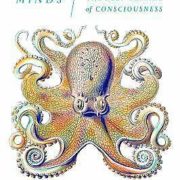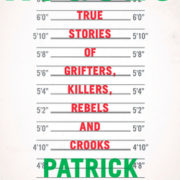Icebound: Shipwrecked at the Edge of the World by Andrea Pitzer
Tales of polar expeditions haunt because we know how they end. In the early 20th century, pack ice crushed Ernest Shackleton’s ship, dashing his race to trek Antarctica. Even this is a relative success as all crew members survived. Not so for John Franklin’s 1845 expedition to find the fabled Northwest Passage. He and his crew were never heard from again. (The British government subsequently investigated their disappearance. Perhaps they should’ve left well enough alone lest unpleasant answers surface, such as those told via eyewitness Inuits: The shipwrecked crew cannibalized each other. News of this scandalized England.)
In Icebound: Shipwrecked at the Edge of World, Andrea Pitzer takes us back even further, to William Barents’ 1596 quest to find a northeastern route to China. Brisk and informative, it’s also stress-laden from bow to stern. Precariously, we sail up and around Nova Zembla, an archipelago in the Arctic Ocean just north of Russia. Storms threaten to snap our mast. Polar bears prowl and then attack. It’s constant tacking to slip evermoving sea ice, some akin to floating mountains. On one occasion, we pass through an ice canyon, which is equal parts mesmeric and terrifying. (“Snow and hail lacquered the ships white, turning them into ghost ships.”) We’re sailing into the unknown. And Barents attempts this journey three times.
A Dutchman, Barents manifested his country’s spirit of the day: capitalize on Far East trade. Spain and Portugal had already made numerous entries into the Southern Hemisphere, so the Dutch looked for a way to expedite trade that avoided the arduous journey around the Cape of Good Hope and awaiting pirates. Of course the Dutch knew that there was a reason no northern route yet existed. But they also were hoping to underscore a long-standing argument that if one could make it past the ice, there’s a chance conditions would moderate. The idea of a temperate North Pole was something that respected cartographers took seriously. As Pitzer notes, Barents and Dutch merchants chose to believe this “lethal delusion.”
Barents didn’t command these voyages; he navigated. While he was in high standing among the crew, his singular goal to complete a voyage often collided with the crew’s singular goal to survive. Most of the book surrounds the third voyage and the sea ice’s eventual victory. Barents and crew must winter on Nova Zembla, and Pitzer’s telling of their ordeal is as harrowing as you can imagine. Without trapping arctic foxes, it’s hard to see how they would have survived. Scurvy had weakened them to the point they could barely function, not that they could do much outside anyway. Often, the structure they built was completely buried in snow during the long polar night.
And then, of course, the polar bears. Pitzer writes of their “lethal magnificence,” and that “each bear offered the same fusion of the mundane and the mythic as the Arctic itself.” Even a felled polar bear almost killed the crew. Desperate for sustenance, but loathing polar bear meat, they devoured the bear’s liver. This almost killed them because a polar bear’s liver contains a lethal dose of Vitamin A.
The asides that Pitzer offers throughout the book are welcome relief from reading of the sailors’ miseries. I learned that most European sailors of the time didn’t know how to swim. And even though we are in the nascent stages of the scientific revolution, superstition still often carried the day. Dutch sailors crossing the equator for the first time had to pay a fine in honor of Poseidon, god of the sea. Also, seeing a parhelion (where ice crystals in the atmosphere refract the illusion of two or three suns) was a good omen to sailors. (Of course, superstition and sailing seem forever entwined.)
Pitzer states that, in terms of making preparations, it’s somewhat perplexing that Barents didn’t learn from his two erstwhile attempts. It’s a good point because he was almost snared by ice during those voyages as well. Perhaps it can be attributed to European hubris of the era: The rest of the world is to be conquered, and we are the ones who will do it. On one of the earlier expeditions, the crew, sailing Russia’s northern coast, came across an indigenous man. Instead of inquiring how he and others survived in this unforgiving climate, they asked him if the territory they were on belonged to “the grand duke of Moscow.” The Nenets man had no idea whom they were talking about. No matter. They tried to kidnap him nonetheless. The same applied to animals. See a walrus? Kill it and take only the tusks. Tragi-comically, on their first expedition they thought they could catch and actually hold a live polar bear aboard the ship. They were quickly disabused of that notion.
Escape from what they called Ice Harbor did not happen until June 1597. Barents did not survive the return, dying next to the sea that would bear his name. (Sailors would also call the sea “the devil’s dance floor.”) He and his crew had discovered Spitsbergen, sailing farther north than any known human. But it’s their story of survival that captivated. A handful of years later, Shakespeare made mention of it in “Twelfth Night”: “where you will hang like an icicle on a Dutchman’s beard.”
Barents’ voyages changed how polar regions were seen. They became destinations to be explored, not thoroughfares to other lands. According to Pitzer, Barents “launched another identity for explorers: the beleaguered polar hero.” These new explorers would be less concerned with linking known lands than with exploring the unknown as the end itself. And their hallmarks were suffering and endurance.
Pitzer eventually discusses what most readers will be thinking throughout the book: Barents sailed 400 years too soon. Disappearing sea ice is a fraught subject, and Pitzer’s book shows us what’s being lost. The polar wild now includes emaciated polar bears clinging to melting floes. In writing the book, Pitzer made a trip to behold Ice Harbor. The current that sent driftwood to the shores—thus providing life-saving fuel for Barents and crew to burn—now sends plastic trash. As I said, this book is stressful.











